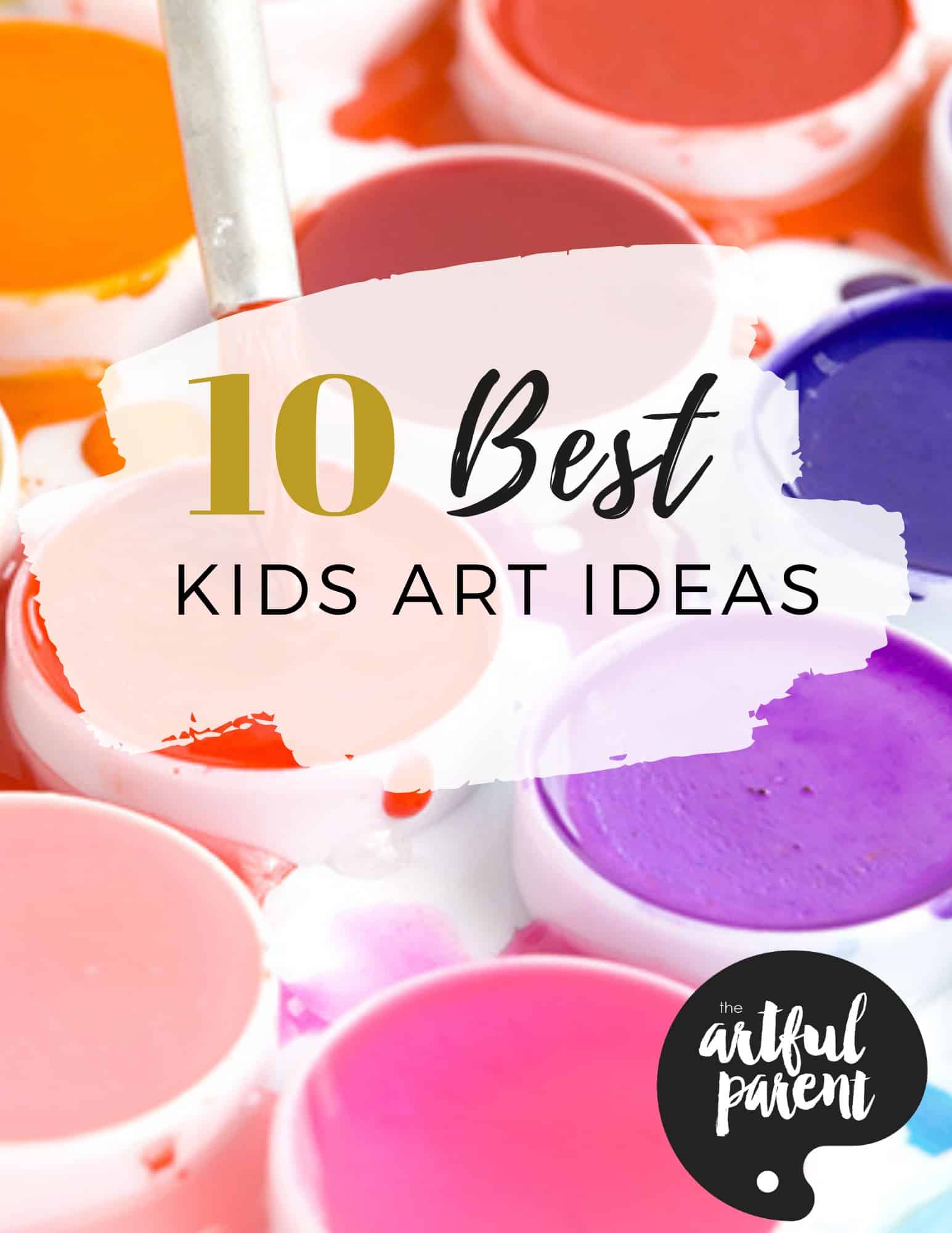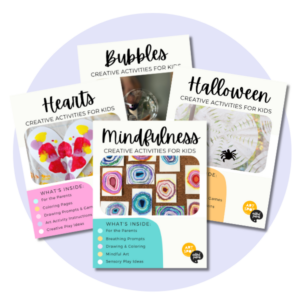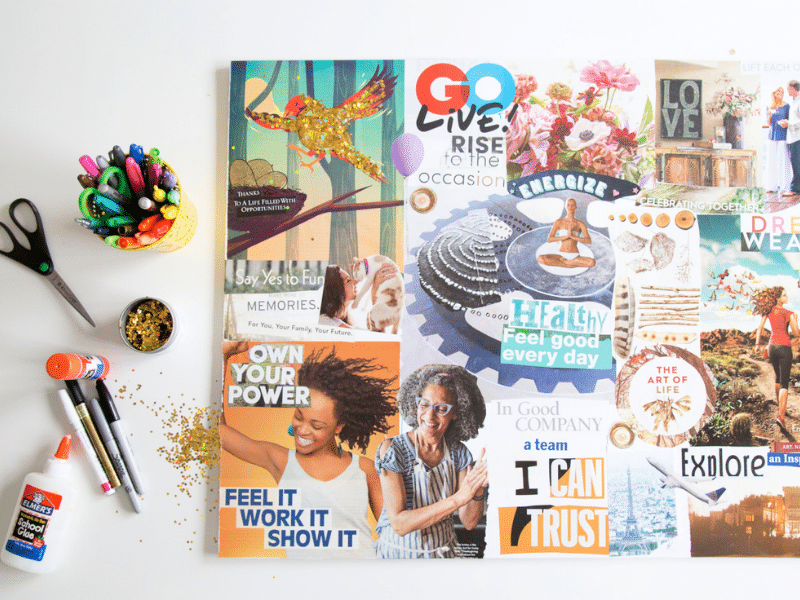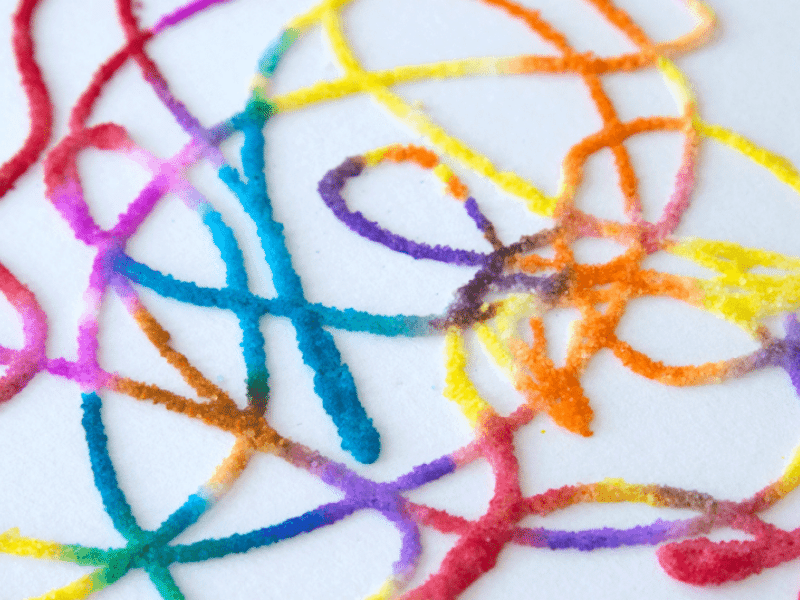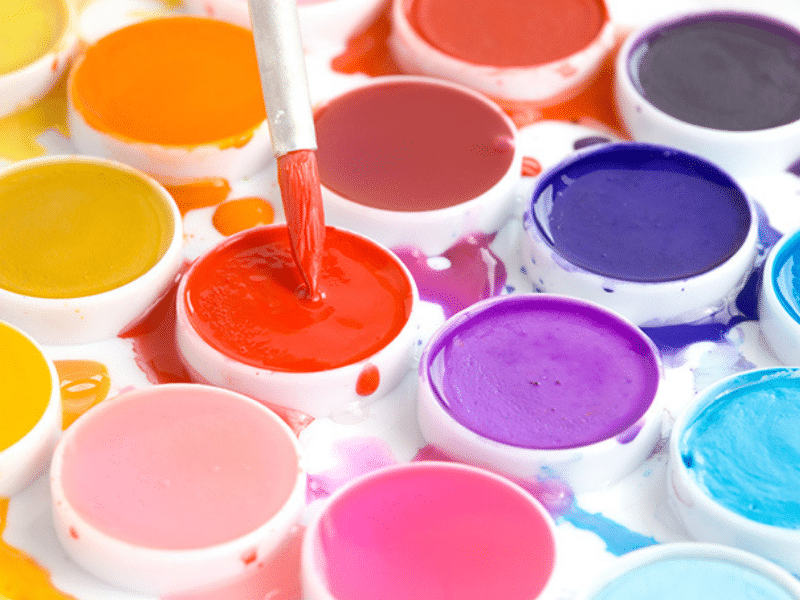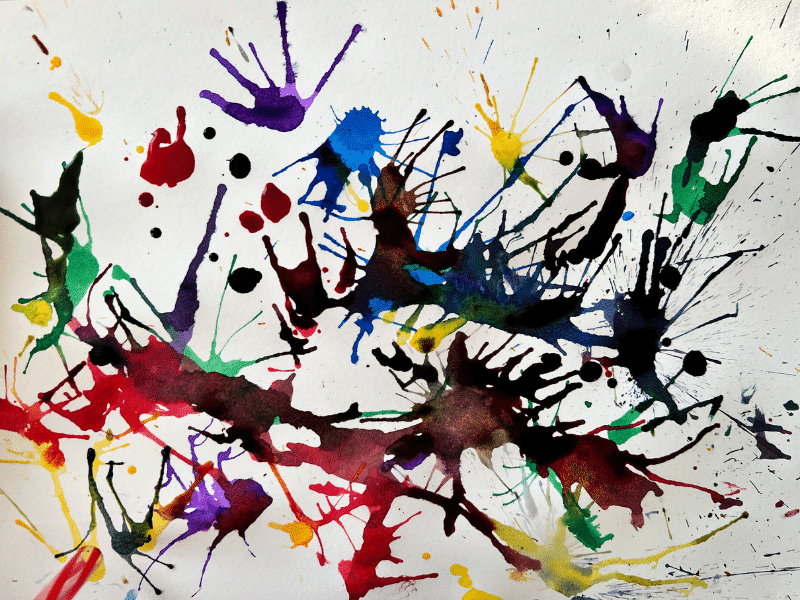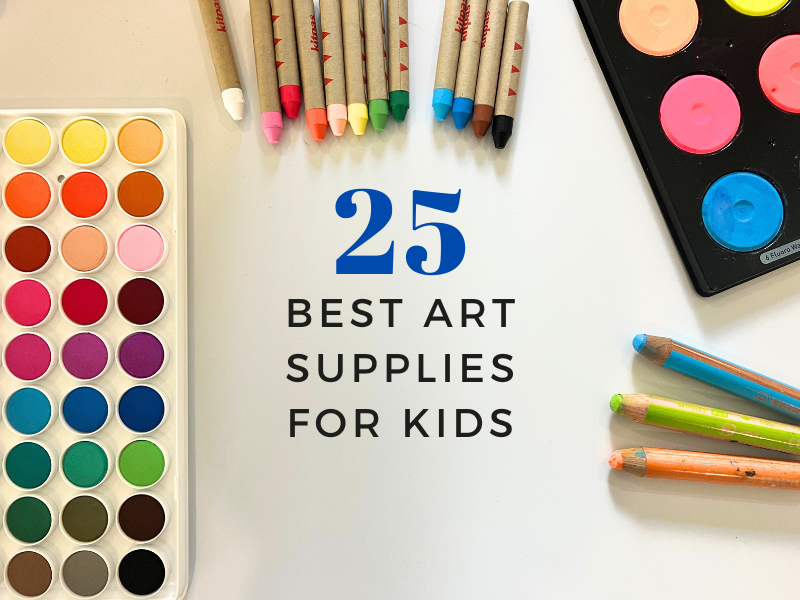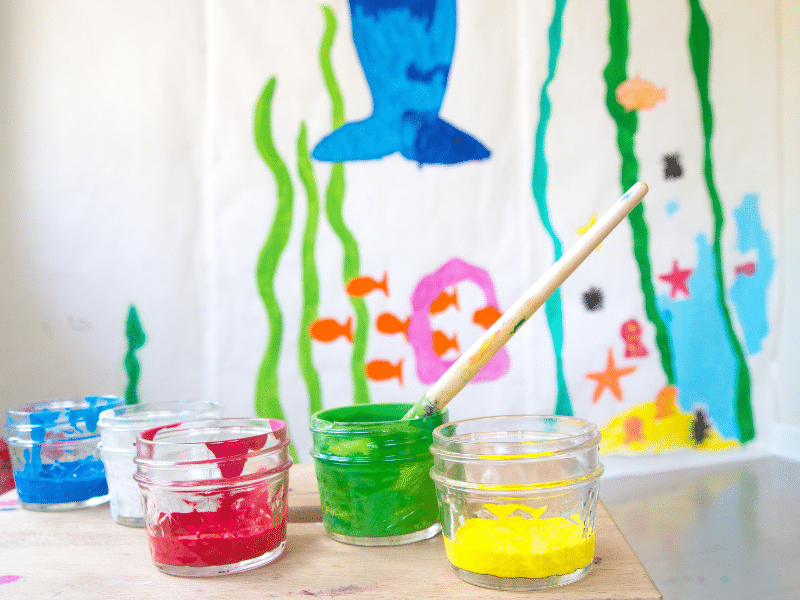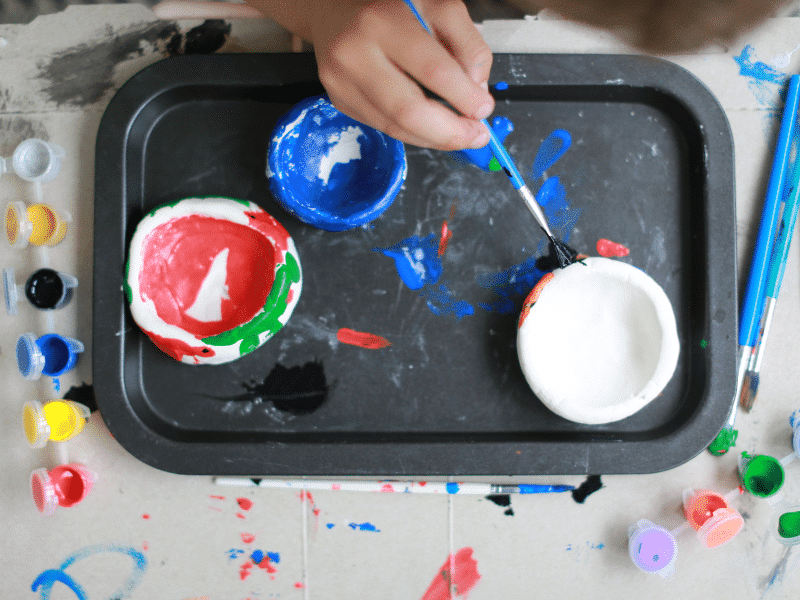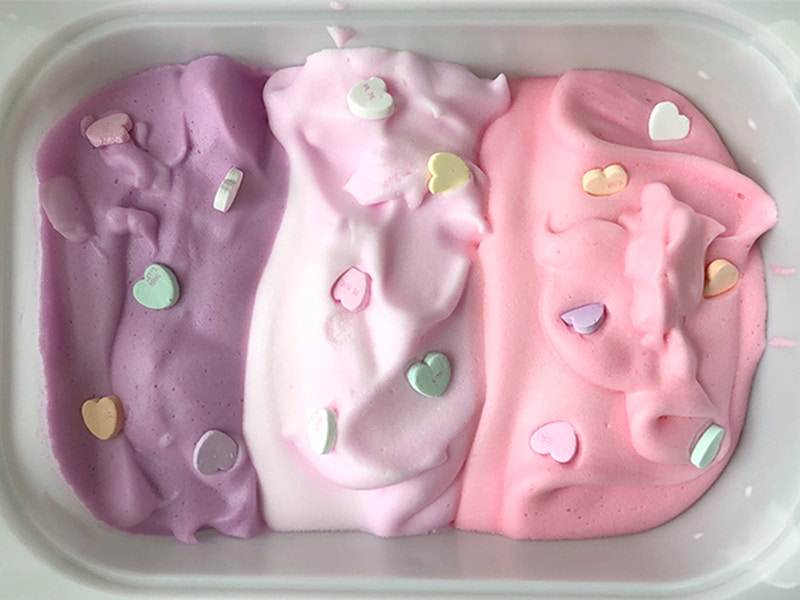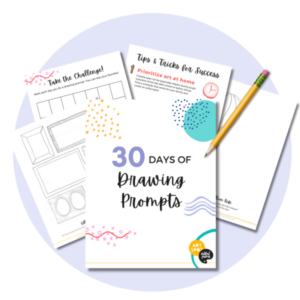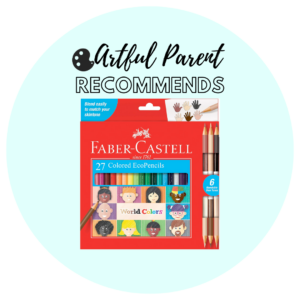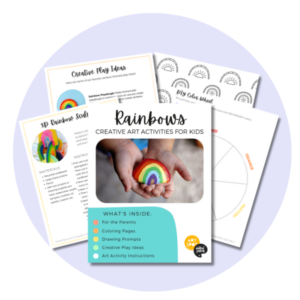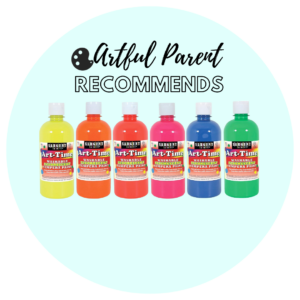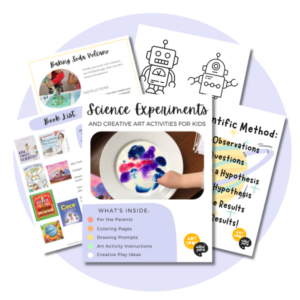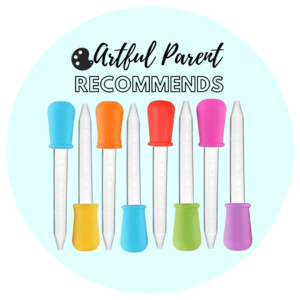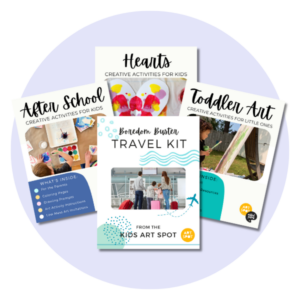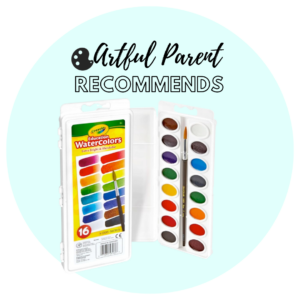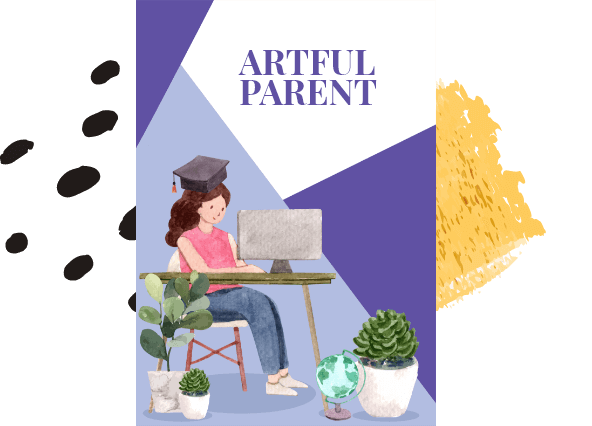
Rachelle Doorley is a museum educator, TinkerLab blogger, and the mother of two. Join me in learning more about museum education and how she encourages her daughters’ creativity at home. Rachelle shares some excellent tips and games for enjoying a museum visit with children!
***Note: Readers will have a chance to win a Toddler and Preschool Art Kit at the end of this interview.***
JEAN: What a background! Will you tell us a bit about how you went from theater design, designing film costumes, and teaching art in public school to working as a museum educator?
RACHELLE: I know, it sounds like roundabout way to find a career! I grew up in a Hollywood family surrounded by filmmakers, and costume design was a natural place to put my creativity. Working on films is an all or nothing world, full of long hours for months on end. During a quiet time between jobs I decided to volunteer as a tour guide at a fabulous art gallery where I took classes in my youth. I enjoyed the energy I got from the children and the challenges inherent in fostering an understanding of art, but I had no idea that it would become such a seminal experience for me. Floating on the high I got from gallery teaching, I applied on a whim to teach middle school art at an inner-city arts magnet school. I suddenly found myself responsible for 250 students, had no budget for materials, and felt like I spent more time managing my classroom than teaching art. With very little guidance, this became a time full of soul-searching.
I left the school to work in art galleries and museums, where I enjoyed a certain freedom that I couldn’t find amidst classroom curriculum, grading, and discipline problems. As a gallery teacher, I was intrigued by visitors’ interpretations of artworks, and loved posing questions and activities that would get them to think critically and creatively about what they were viewing. I was lucky to find my way to the Arts in Education program at Harvard, where I was able to hone my point of view as an art educator and ultimately, parent. What keeps me engaged in museum education is helping others tap into their own interpretations of works of art. What fascinates me is developing and testing tools that enable both children and adults to interact with art on their own terms…without searching for a “right answer,” an answer that isn’t really there to begin with.
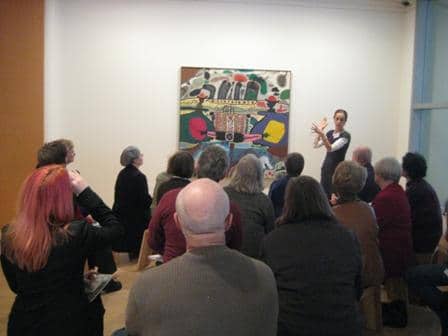
JEAN: I’d love to hear more about your museum education work. What exactly do you do?
RACHELLE: Before having my own children, I managed school programs, wrote gallery activity sheets, worked closely with teachers to plan field trip visits, and trained gallery teachers and docents to facilitate engaging and memorable art experiences for school groups at the San Jose Museum of Art. Children love coming to our museum because we make the visits fun. They spend about an hour discussing and interpreting art in the galleries, followed by an hour of art making. Now that I’m a mom to two small children, I’ve downsized my role to training the museum’s dedicated team of volunteer docents to lead interactive tours to our adult and family visitors.
Children are natural creative thinkers, and if you ask them what they see in an artwork they’ll come up with all sorts of well-grounded interpretations. My biggest challenge in this role has been getting adults to be fearless interpreters of art. Did you know that most adults look at the descriptive labels longer than they look at the art itself? We live in a culture that values correct answers, so it’s natural for adults to ask questions like, “what is the point?” or “what does the artist want me to think about this?” before taking a careful look at what they’re seeing. The truth is that art is inherently full of mysteries, and curators and artists don’t always have the answers that visitors are searching for. In traditional museum tours, visitors follow a knowledgeable guide who shares information about the artist and artwork. A big trend in museum education is to move away from this, toward a more active form of touring that includes things like dialogue, speculation, and questions. Our docent program is unique in that we train our guides to facilitate conversations with our visitors, rather than give a lecture tour. While this approach isn’t for everyone, the tours are engaging, and our hope is that the visitors come away with better skills for looking at art. I feel really lucky that I have a job that I love, and one that’s also flexible enough to allow me to feel like a full-time parent.

JEAN: Will you share your top tips for enjoying a museum visit with children?
RACHELLE: I’m so glad you asked! Visiting a museum with small children can be a daunting task, especially if it’s to an exhibition or museum you haven’t seen before. If I had to limit it to three things, they would be: Get oriented, don’t overdo it, and plan engaging activities.
1. Get orientated. We like to suggest that teachers pre-visit the galleries before their school tours, but this is rarely possible for parents. Instead, spend some time scooting around the museum’s website. Check out the current exhibitions to see what looks relevant to your child’s interests. A lot of museums assemble downloadable activity sheets for families, so it’s worth looking for this (usually found under “education” or “learning”). If they don’t offer information specifically for families, worksheets assembled for teachers are often relevant to parents as well. If they post their map online, take a minute to print it out, since it’s nice to know where the restrooms and café are in advance!
2. Don’t overdo it. Children’s attention spans can be painfully short, so plan to keep the visit short too. A maximum of forty-five minutes is a good benchmark for art-viewing before taking a snack or lunch break. This, of course, depends on your child’s age, so take your cues from them and don’t feel guilty if you have to leave a gallery after 3 minutes. Kids know what they like, but as they get older they can be encouraged to linger a little longer. If you can, have some activities prepared to keep the energy level high, and to fend off art fatigue.
3. Plan engaging activities. Many museums have age-appropriate gallery games and art kits that you can check out and carry around the galleries. If you’d like to strike it out on your own, here are a couple of my favorites that I like to recommend to families:
o Scavenger Hunt. Go to the museum’s website and look for images that are currently on view under “exhibitions.” Print out some of these images and give them to your child to hunt for. To make this more challenging, print close-ups of these artworks. Alternatively, make the museum gift shop your first stop and purchase a handful of postcards. Once an artwork is found, have a short discussion about it before hunting for the next one. Once you’re done hunting, talk about which pieces were the favorites and why.
o Ask 3 simple questions. This activity is based on VTS (Visual Thinking Strategies), a tested strategy for facilitating meaningful discussions about art with children. Open the discussion by asking, “What’s going on in this picture?” Be open to all interpretations and have an open dialogue with your child. Paraphrase his or her responses without interjecting your own opinion or putting words in the child’s mouth. Follow up by asking, “What more can we find?” and then continue the discussion until it’s run it’s course. If your child offers an answer that’s open to interpretation, such as “The woman looks happy,” ask “What do you see that makes you say that?” This last question is important because it encourages the child to provide evidence for his or her ideas and keeps the adult from guessing at or making assumptions about the reason behind the child’s interpretation.
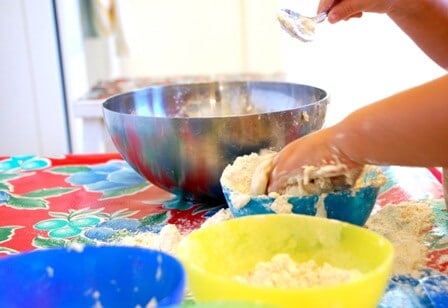
JEAN: Your blog, TinkerLab, is full of the creative ideas and explorations you share with your toddler. What is it like having your own small child to test your ideas on?
RACHELLE: It’s as fun as I thought it would be! I enjoyed my daughter as a baby, but a little piece of me was desperate for a little art-making companion. As such, I probably introduced art materials to her much earlier than a lot of parents do. It started simple, with crayons and a huge amounts of paper, and as she grows our practice has emerged into experiments with whatever we can get our hands on. I’m a natural collector, and have to curb my enthusiasm lest my home is flooded with vintage purses and piles of art books. Because I can defend spending inordinate amounts of money and space on my child’s future and creative intelligence, my current collecting obsession is potential art materials for toddler art experiments. Makeup sponges, liquid watercolors, delicate wrapping paper, glitter, salt, beans…my radar is attuned to anything that could pass as a mark-making tool, sculpting, or collage material. Because I’m a sponge for creative and crafty idea, there are projects brewing in all corners of my house. And now that I have children, this “problem” has grown exponentially. It can be exhausting, but I wouldn’t have it any other way.
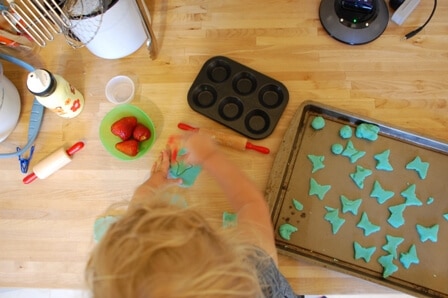
JEAN: What are your favorite creative activities to do at home with your daughter?
RACHELLE: Because my older daughter is at this great age where everything is shifting and emerging (she’s 28 months), I’m sure my answer will change by next week, but I’ll take a stab at this.
We’ve been addicted to play dough since she was about 15 months old, and it’s still a staple in our house. I love MaryAnn Kohl’s play dough recipe, and even posted it on my blog. We make cookies, pasta dinners, bunnies, and snowmen. It’s a great medium because it’s moderately ephemeral…whatever you make can be squashed and then transformed into something new. My daughter recently came home from school talking about glittery play dough, and then spent the next week adding and mixing great amounts of glitter into all of our play dough. Sparkly! I love how open children are to new ideas, and how inspired they are by the world around them. It probably would have taken me a good year to come up with that glitter idea on my own.
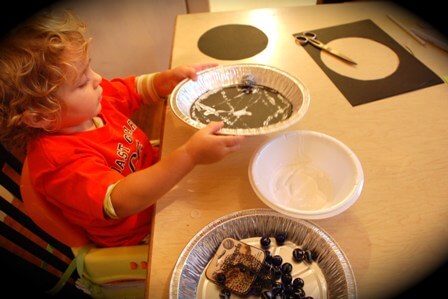
We also love, love, love marble painting. I’d be surprised if this ever goes out of fashion. It’s kind of new to us, so for now I’ll chalk it up to the novelty of it, but it’s very fun in all of its forms. Once the weather gets nice again, I look forward to trying out your super-size ball painting activity.
Paint in general is fabulous for process-based art making. It’s fun to smear, move around, and layer. It can be watery or thick, and of course mixed. We have tons of paint in the house: tempera, watercolors, gitter glue, homemade paint, BioColors.

Beyond specific activities, my daughter has ready access to art materials should an idea strike. So, we have a host of tools at the ready for self-service art making: paper, markers, pencils, crayons, stickers, glue, play dough, stamps, etc. We’ve practiced using each of them so many times that I trust her to use them appropriately without my supervision (famous last words, right?). And although she’s still quite young, I can already see this approach paying off. When she has an idea, she can problem-solve and try to figure out how to execute it. For example, she’s been decorating lunch bags for my husband, which is entirely her idea, and makes thank you cards when the mood strikes. I adore her current age and want to bottle it up, but I also look forward to watching her unfold and grow into a more complex creative thinker.
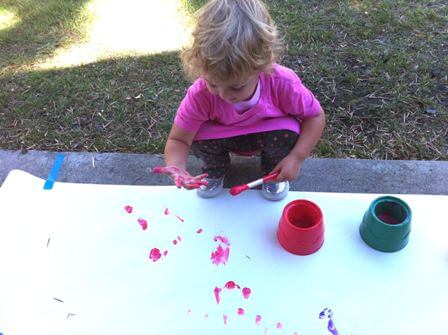
JEAN: Anything else you’d like to add?
RACHELLE: I love what you’re doing at The Artful Parent. I found your site back in my new-mommy days when I was longing for a little art buddy. So you and Maia filled the void until my daughter was old enough to hold a crayon. We eventually started a toddler art group like yours, and I have to say how impressed I am with your organization skills because I couldn’t keep our group going for longer that a few months! Thankfully the other moms and I are all friends and still see each other weekly, but I find that it’s been a lot easier to make art with my daughter when the mood strikes.
JEAN: Thanks, Rachelle! I love all that you are doing on TinkerLab. And what great tips for visiting a museum with children! I can’t wait to try that scavenger hunt with Maia!
—


Giveaway: Toddler and Preschool Art Kit
Leave a comment to this interview by Thursday, November 18th at 12 midnight, EST to be entered into a random drawing for this Toddler and Preschool Art Kit that Rachelle put together. Included in the kit are Twistables, stickers, sequins, glue sticks, glue bottle, construction paper, three kinds of markers, sidewalk chalk, and creative activity cards.
The random number generator picked #52 so Mary Bruno is the winner of the Toddler and Preschool Art Kit. Congrats Mary! I’ll send you an e-mail…
These are great ideas- I am always looking for new things to do with my 2 year old. Thanks!
Related Posts
- Mike Norris on museum education at the Met
Mike Norris, Museum Educator, oversees programs for families at The Metropolitan Museum of Art. Here…
- Mary Ann Athens on Art in Education
Mary Ann Athens is an amazing Asheville-area elementary art teacher and the mother of two.…
- A visit to the art museum
I took the girls to the art museum yesterday after school. I used to take…



